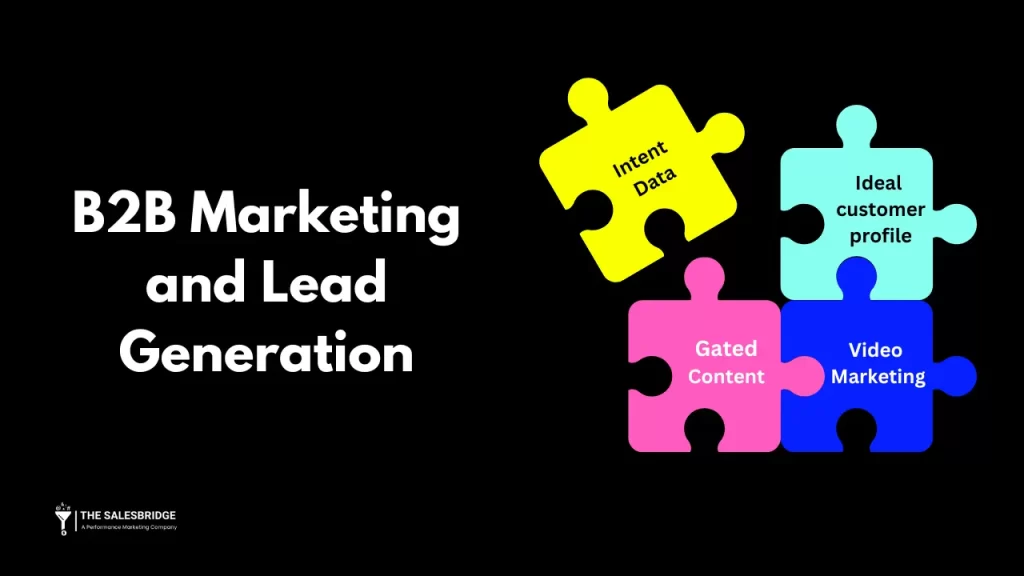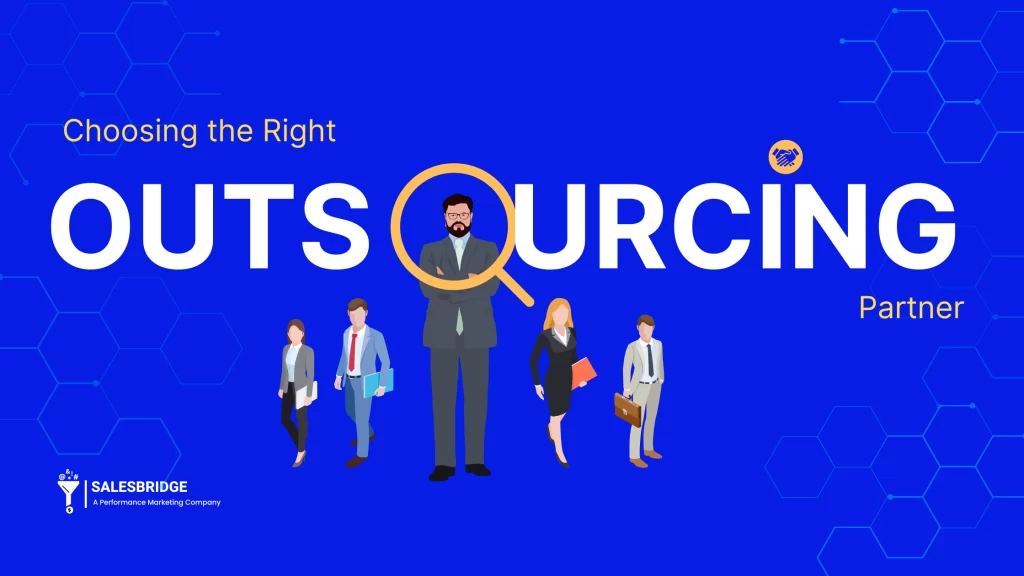Lead generation is one of the most important aspects of B2B marketing. It’s what keeps your business running and growing, but it can be difficult to do well.
In this article, we’ll look at why lead generation is so important, how it works, and some tips for getting started with your own B2B marketing campaigns.
Table of Contents
Why is Lead Generation Important to B2B Marketing?
Lead generation is the process of creating leads and nurturing them until they become qualified sales opportunities. It’s also referred to as lead nurturing, which refers to the activities you take to convert your leads into customers.
Lead generation is important because it helps you build relationships with potential customers, allowing you to understand their needs better so that you can provide them with relevant solutions and services. This improves customer targeting and increases sales efficiency by reducing marketing costs (since there are no wasted ad spends).
In addition, lead generation provides higher ROI compared with other marketing efforts like content creation or social media marketing because it allows marketers to identify their target audience more accurately than before–and then reach out directly through email or phone calls instead of relying on organic search engine results for traffic generation purposes only!
How Can Businesses Utilize Lead Generation in B2B Marketing Strategies?
- Provide actionable strategies for businesses to generate leads.
- For example, create valuable content that your target audience will find useful and share it on social media.
- Or attend industry events where you can meet potential clients in person and build relationships with them.
Best Practices for Effective Lead Generation
- Personalization: Personalize your content to make it relevant to the person reading it.
- Targeting: Ensure that you are targeting the right audience with your marketing campaigns and lead-generation efforts.
- Lead Nurturing: Once a prospect is interested in what you have to offer, continue nurturing them until they become customers or partners.
1. Research & Analysis
The first step to practicing SEO is to research and analyze your competition.
The best way to do this is by using Google’s Keyword Planner tool, which shows you how many people are searching for certain keywords every month. You can also use tools like SEMRush or Ahrefs to get more detailed insights into the keyword landscape of your industry. Once you’ve identified some relevant keywords, it’s time for some analysis:
- How many pages does each competitor have in their top 10 rankings?
- What keywords do they rank for? Are these relevant to my business?
- How much traffic does each website receive from those search terms?
2. Optimizing Your Website
You can also optimize your website by reducing the size of images and videos on each page. Use tools like Google PageSpeed Insights or GTMetrix to check page loading speed, and then make adjustments where necessary.
- Optimize titles, meta descriptions, and headings – It’s important to ensure that these elements are optimized for search engines so that they can be found in search results when someone searches for a keyword related to your business or industry.
On-Page SEO
To ensure your content is easily found, you should optimize the titles, meta descriptions, and headings. This means including keywords that are relevant to your business and customer needs. If you have a video on YouTube or Vimeo make sure that there’s a transcript so users who don’t have time for video viewing can still access the same information through text.
Off-Page SEO
Off-page SEO is a strategy that focuses on building links to your website. It’s important because it helps search engines find and rank your site, which in turn drives more traffic to it.
The best way to build backlinks is through guest posting on other websites or blogs. When you write an article or blog post for another website, they’ll post it on their site with a link back to yours (the “back” part of “backlink”). This helps search engines recognize that there are other people interested in what you’re talking about–and therefore worth ranking high in their search results when someone searches for those keywords!
3. Tracking & Measuring Results
Tracking and measuring results is another important part of lead generation. You need to know how well your efforts are working so that you can adjust them accordingly.
You should use tools like SERPWizz and Google Analytics to track rankings and traffic, as well as monitor bounce rate and conversion rates. This will give you an idea of what’s working, what isn’t working, which channels are driving the most traffic (and therefore leads), etc.
4. Local SEO
Local SEO is a great way to boost traffic from users who are looking for businesses just like yours within their community. This type of marketing can help you reach new customers and increase brand awareness, especially if you’re a local business.
To take advantage of this strategy, create citations in Google and other search engines so that people can find your business when they search for it by name or category (e.g., “plumber”). You should also create content specifically designed for local audiences–for example, write articles about how to find reliable plumbers or tips on keeping your pipes clean during the winter months. Finally, boost traffic from those users who are looking for businesses just like yours within their community by promoting these pieces of content through social media channels.
5. Voice Search Optimization
Voice search optimization is a key component of lead generation.
- Optimize for natural language queries: Natural language queries are the ones that users ask in their own words, such as “Where can I find a good yoga studio?” or “Who sells gluten-free pizza near me?” When you optimize your content for these types of questions, you’re more likely to rank higher in voice search results because Google understands what your site is about and can provide relevant answers based on its understanding of what the user wants.
- Use structured data and targeting long-tail keywords: Structured data helps Google understand what each page on your site is about so it can provide more accurate results when someone searches for something specific (like “yoga studios”). This also makes it easier for people who use assistive technologies like screen readers to navigate through pages without having their experience disrupted by irrelevant content or links leading them away from the page they’re currently viewing–which means less time spent trying out different websites before finding one worth visiting again!
6. Video SEO
Video SEO is another important aspect of B2B marketing. It’s crucial to create engaging content that will help you rank higher in search engines so that you can reach more people who are looking for your services or products.
To optimize videos for YouTube:
- Create a title that includes keywords related to the topic of your video and includes one or two call-to-actions (CTAs) at the end of it. For example, if your CTA is “Sign up now,” then you’d want something like “How To Get Your First 100 Customers In 30 Days – Sign Up Now!” in your title tag so viewers know what they’re getting into before clicking on it. You want this information in other areas of the description section as well; think about how many times someone might see or read about this video before actually watching it!
- Make sure all transcripts are available on each video page; this will allow Googlebot to access information about each piece of content within seconds instead of having him/her spend hours trying to figure out what was said during those 10 minutes spent listening intently while watching those two people talking back and forth at each other without saying much at all.
How do B2B marketing and lead generation work together?
B2B marketing and lead generation are the perfect matches because they work together to create a seamless customer journey that results in higher sales and revenue. B2B marketing is all about targeting other businesses as customers and lead generation is the process of identifying and cultivating potential customers.
1. Build relationships
In the B2B world, lead generation is essential because businesses typically have a longer sales cycle and require more information and education before making a purchase decision. As a result, lead generation allows businesses to build relationships with potential customers over time, providing them with the information and resources they need to make informed decisions.
2. Target niche audiences
One of the primary benefits of lead generation in B2B marketing is the ability to target specific audiences more accurately. With lead generation, businesses can create highly targeted campaigns that speak directly to the needs and pain points of their potential customers. This targeted approach increases the chances of converting leads into paying customers, resulting in higher sales and revenue.
3. Build brand awareness
In addition, lead generation allows businesses to build brand awareness and establish themselves as thought leaders in their respective industries. By providing valuable content and resources to potential customers, businesses can position themselves as experts in their field, increasing their credibility and authority.
4. Gain credibility
Moreover, lead generation provides businesses with valuable data and insights into their customers’ behaviors and preferences. This data can be used to inform marketing strategies and improve the customer experience, resulting in higher customer retention rates and increased customer lifetime value.
Summing It Up
Overall, B2B marketing and lead generation are the perfect matches because they work together to create a seamless customer journey that ultimately leads to higher sales and revenue for businesses. By targeting specific audiences, building brand awareness, and providing valuable resources and data to potential customers, businesses can establish themselves as leaders in their industry and build long-lasting relationships with their customers. By implementing an effective lead generation strategy through an agency, businesses can increase their chances of success in the highly competitive world of B2B marketing.





